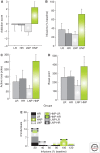Responses to novelty and vulnerability to cocaine addiction: contribution of a multi-symptomatic animal model
- PMID: 23125204
- PMCID: PMC3543096
- DOI: 10.1101/cshperspect.a011940
Responses to novelty and vulnerability to cocaine addiction: contribution of a multi-symptomatic animal model
Abstract
Epidemiological studies have revealed striking associations between several distinct behavioral/personality traits and drug addiction, with a large emphasis on the sensation-seeking trait and the associated impulsive dimension of personality. However, in human studies, it is difficult to identify whether personality/behavioral traits actually contribute to increased vulnerability to drug addiction or reflect psychobiological adaptations to chronic drug exposure. Here we show how animal models, including the first multi-symptomatic model of addiction in the rat, have contributed to a better understanding of the relationships between different subdimensions of the sensation-seeking trait and different stages of the development of cocaine addiction, from vulnerability to initiation of cocaine self-administration to the transition to compulsive drug intake. We argue that sensation seeking predicts vulnerability to use cocaine, whereas novelty seeking, akin to high impulsivity, predicts instead vulnerability to shift from controlled to compulsive cocaine use, that is, addiction.
Figures





References
-
- Ahmed SH, Koob G 1998. Transition from moderate to excessive drug intake: Change in hedonic set point. Science 282: 298–300 - PubMed
-
- Allcock CC, Grace DM 1988. Pathological gamblers are neither impulsive nor sensation-seekers. Aust N Z J Psychiatry 22: 307–311 - PubMed
-
- Alterman AI, Cacciola JS, Habing B, Lynch KG 2007. Addiction Severity Index Recent and Lifetime summary indexes based on nonparametric item response theory methods. Psychol Assess 19: 119–132 - PubMed
-
- Ambroggi F, Turiault M, Milet A, Deroche-Gamonet V, Parnaudeau S, Balado E, Barik J, van der Veen R, Maroteaux G, Lemberger T, et al. 2009. Stress and addiction: Glucocorticoid receptor in dopaminoceptive neurons facilitates cocaine seeking. Nat Neurosci 12: 247–249 - PubMed
-
- American Psychiatric Association 2000. Diagnostic and statistical manual of mental disorders, 4th ed., Text revision (DSM-IV TR) American Psychiatric Publishing, Arlington, VA
Publication types
MeSH terms
Substances
LinkOut - more resources
Full Text Sources
Medical
